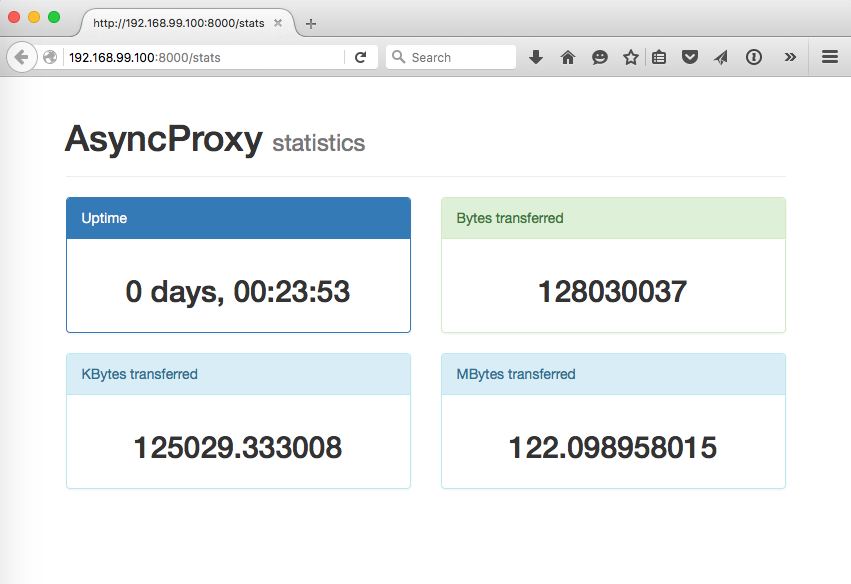An asynchronous HTTP proxy built with Python and Twisted complying to the requirements specified below:
-
Range requests support as defined in RFC2616, but also via
rangequery parameter. -
Return 416 error in case where both header and query parameter are specified, but with different value.
-
Expose proxy statistics at /stats endpoint (total bytes transferred, uptime).
-
Proxy should be delivered with appropriate
Dockerfileanddocker-compose.yml(Hint: use python:3.5 image). -
Proxy should be configureable via environmental variables.
This software is compatible with Python 2.7 due to the use of Twisted, a library that still is doing the port to Python 3+. Most of the library is already ported but still isn't too stable as with Python 2.7.
Twisted 15.5.0 was used.
For more info, please check requirements.txt inside the server folder.
-
Have Docker 1.9.1+ and Docker Compose 1.5.2+ properly installed and configured.
-
To run locally, have virtualenv (preferably virtualenvwrapper) installed.
-
Follow the steps bellow:
ASYNC_PROXY_SERVER_PORT
This environment variable tells the proxy in which port to listen.
The configured port also will be exposed in the docker container.
The proxy will start by default at port 8000. To run on Docker, this env variable must exists and be properly set.
Example:
$ export ASYNC_PROXY_SERVER_PORT=5000$ git clone https://github.com/jcfausto/asyncproxy.git
$ cd asyncproxy$ docker-compose up -d #to detach from container after its initialization
$ docker ps # to check if the containter is running. $ mkvirtualenv asyncproxy
$ pip install -r requirements.txt
$ twistd --nodaemon --python=server/async_proxy_server.pyThere are some tests written.
$ nosetests --with-spec ./specsThe easyest way to test is to configure your browser to use this proxy. Start navigating after the configuration and everything should be fine.
If you want to see something happenning, run locally or start the docker container without the "-d" option.
The proxy was created with an endpoint called /stats where you will be able to see the proxy's usage information as shown below:
